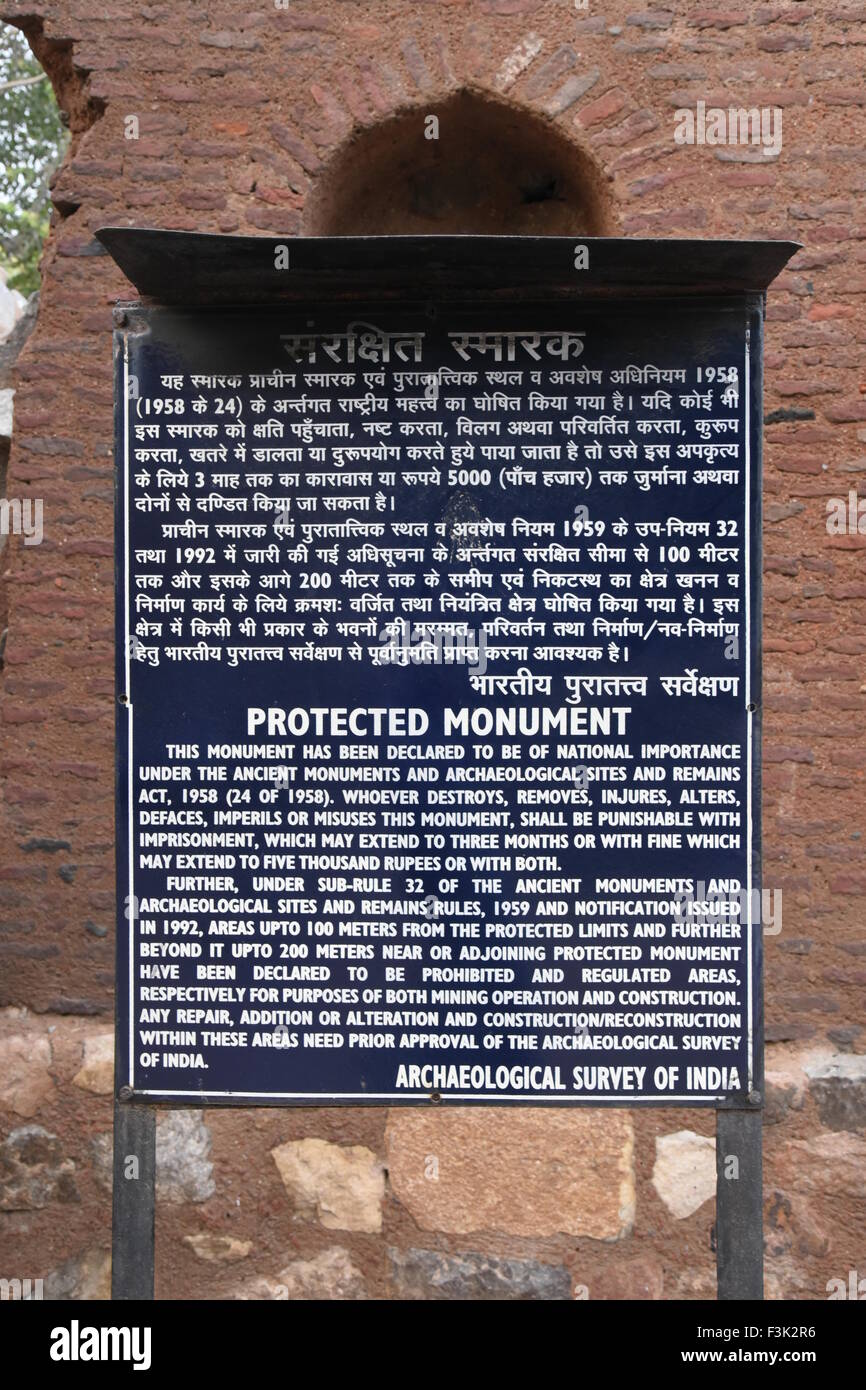Archaeological Survey of India (ASI) Najaf Khan Tomb monument communal declaration Blue color Board with White text, Delhi,India

Image details
Contributor:
Ambuj Khanna / Alamy Stock PhotoImage ID:
F3K2R6File size:
38.8 MB (1.6 MB Compressed download)Releases:
Model - no | Property - noDo I need a release?Dimensions:
3008 x 4512 px | 25.5 x 38.2 cm | 10 x 15 inches | 300dpiDate taken:
2 August 2015More information:
Najaf Khan Korai (1723– April 26, 1782) was a Baloch adventurer in the court of Mughal emperor Shah Alam II. He had royal lineage, having been a Baloch prince, when that dynasty was deposed by Nader Shah in 1736[citation needed]. He came to India around 1740 and may even have come a year earlier with the Baloch. His sister married into the family of the Nawab of Awadh. He also held the title of Deputy Wazir of Awadh. He served during the Battle of Buxar and his main contribution in history was as the highest commander of the Mughal army from 1772 till his death in April 1782.[wikipedia] The Tomb of Najaf Khan lies opposite Safdarjung Airport which is situated towards the eastern side of the Delhi-Mehrauli Road and in close proximity to Safdarjung's Tomb. It is easily accessible by local buses, auto rickshaws and hired cabs. Mirza Najaf Khan was probably born sometime in the year 1722 AD though there is no conclusive evidence to this fact. He was an Adventurer who relocated to India and became a noble in the Imperial courts of Mughal Emperor Shah Alam III. A Persian by native, his ancestry lineage traces back to Prince Safavi, a royal Persian dynasty that was overthrown by Nader Shah in 1735 AD. 'Mirza Najaf Khan came to India with his sister sometime around or before 1740 AD (actual dates and year are unknown) and presented themselves at the courts of Emperor Muhammad Shah. The Emperor then appointed Najaf Khan as the Deputy Minister of Awadh wherein he married his sister into the noble family of the Nawab of Awadh. Later, Najaf Khan was appointed as the Commander In Chief of the Army of the Mughal Empire from 1772 AD up till his demise in April 1782 AD. Mirza Najaf Khan was instrumental in implementing a blend of the European model as well as the Traditional methods in the Mughal Cavalry which was penned down by H. G. Keene in his work named 'The Fall of the Moghul Empire of Hindustan' [content by delhiinformation.in]